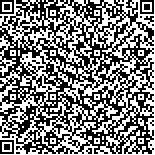| 本文已被:浏览 1043次 下载 577次 |

码上扫一扫! |
|
|
| 红鳍东方鲀(Takifugu rubripes)耐低温相关微卫星标记的初步筛选 |
|
袁晨浩1,2, 刘志峰3,2, 马爱军3,2
|
|
1.浙江海洋大学, 浙江 舟山 316000;2.青岛海洋科学与技术试点国家实验室海洋生物学与生物技术功能实验室, 山东 青岛 266237;3.中国水产科学研究院黄海水产研究所 农业农村部海洋渔业可持续发展重点实验室, 山东 青岛 266071
|
|
| 摘要: |
| 采用微卫星结合混合群体分离分析法技术(SSR-BSA)对红鳍东方鲀群体进行耐低温相关微卫星标记的筛选。首先对300尾红鳍东方鲀幼鱼进行低温处理,分别获得34尾耐低温(S组)和不耐低温个体(D组)。分别在两组中随机挑选15尾提取基因组DNA,构建耐低温和不耐低温DNA混池,然后用148对微卫星引物对其进行扫描。结果发现4个标记(fms45、fms82、fms100和fms182)在耐低温和不耐低温DNA混池中扩增出差异条带。用S组和D组全部个体对4个标记进行单个体验证,结果显示由fms100扩增,携带有116 bp条带的个体在S组和D组的出现频率分别是53%和18%,132 bp条带的出现频率分别是59%(S组)、24%(D组);由fms182扩增,携带有125 bp的个体在S组和D组出现的频率分别是12%和35%,经卡方检验P值均小于0.05,差异显著。本文关于红鳍东方鲀耐低温分子标记的报道,为研究红鳍东方鲀耐低温的遗传基础以及相关分子机制提供了依据,也为开展红鳍东方鲀耐低温分子标记辅助选育提供了良好的基础。 |
| 关键词: 红鳍东方鲀 耐低温 微卫星标记 SSR-BSA |
| DOI:10.11759/hykx20200918001 |
| 分类号:S917.4 |
| 基金项目:国家重点研发计划子课题-红鳍东方鲀耐低温的遗传基础(2018YFD0900301-12);中国水产科学研究院科技创新团队(2020TD25) |
|
| Screening and identification of microsatellite markers related to low temperature tolerance in Takifugu rubripes |
|
YUAN Chen-hao1,2, LIU Zhi-feng3,2, MA Ai-jun3,2
|
|
1.Zhejiang Ocean University, Zhoushan 316000, China;2.Laboratory for Marine Biology and Biotechnology, Pilot National Laboratory for Marine Science and Technology(Qingdao), Qingdao 266237, China;3.Key Laboratory of Sustainable Development of Marine Fisheries, Ministry of Agriculture and Rural Affairs, Yellow Sea Fisheries Research Institute, Chinese Academy of Fishery Sciences, Qingdao 266071, China
|
| Abstract: |
| Microsatellites, combined with bulked segregation analysis (BSA), were used to screen for markers of low temperature tolerance in Takifugu rubripes. A total of 68 individuals comprising 34 individuals from the low temperature tolerant group (S group) and 34 from the non-tolerant group (D group) were used in this study. Two DNA pools were constructed using 15 individuals each from the S and the D groups. The DNA pools were screened for low temperature tolerance markers using 148 pairs of microsatellite primers. Four primers pairs (fms45, fms82, fms100, and fms182) amplified differential bands in the S and the D groups. All 68 individuals were used to perform a single experience certificate for 4 markers. The results showed that the frequencies of the 116bp band from the fms100 primer in the S and the D groups were 53% and 18%, respectively The frequencies of the 132bp band from the fms100 primer were 59% (S Group) and 24% (D Group). The frequencies of the 125bp band from the fms182 primer in the S and the D groups were 12% and 35%, respectively. All p values from the chi-square test were 0.05, indicating significant differences among the band frequencies. This is the first report on molecular markers of low temperature tolerance in T. rubripes, which provides a baseline for (1) studying the genetic basis and related molecular mechanisms of low temperature tolerance in T. rubripes and (2) molecular marker-assisted breeding of the species. |
| Key words: Takifugu rubripes low temperature tolerance microsatellite markers SSR-BSA |
